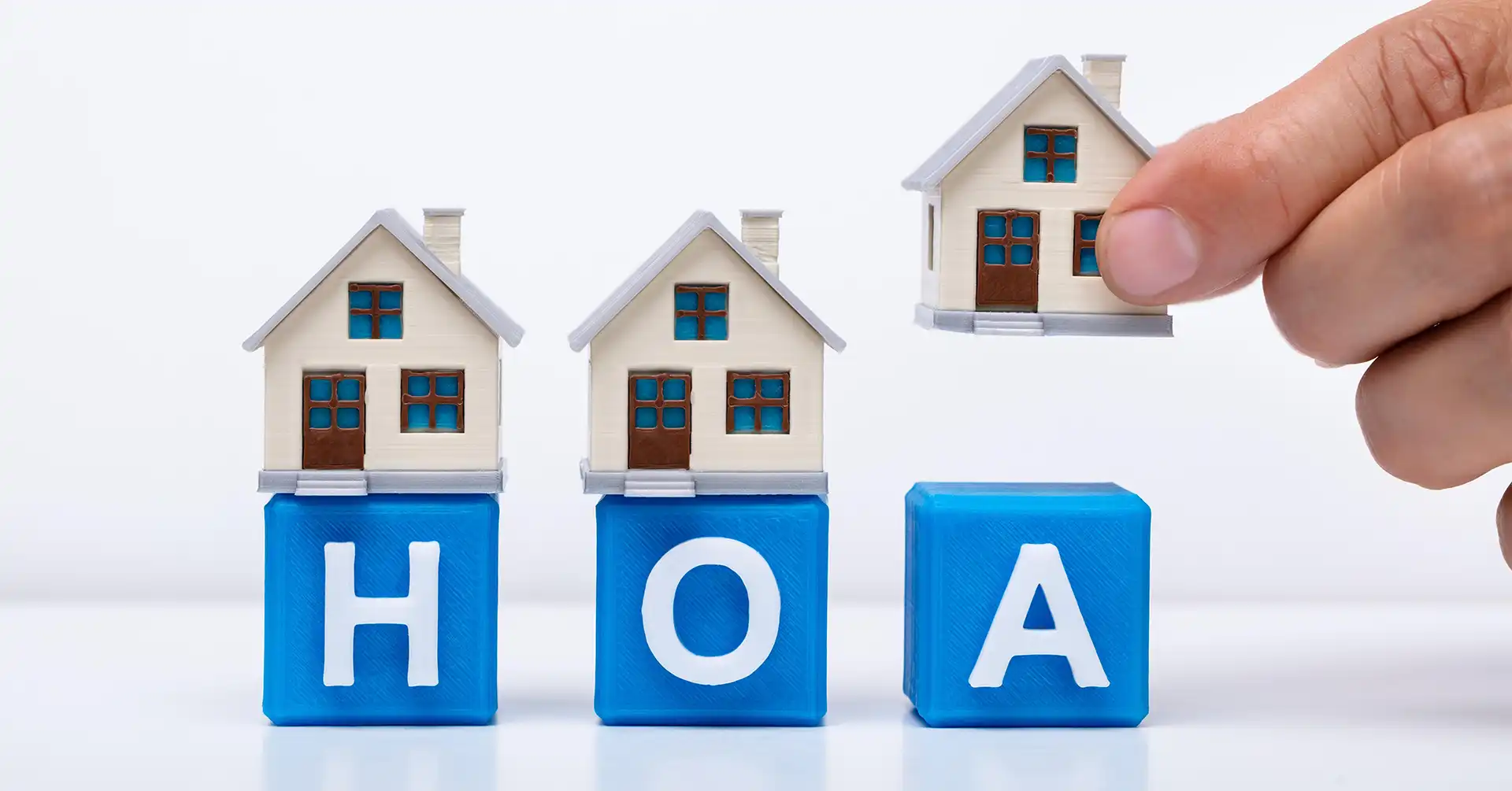Hello, my wonderful readers! Welcome to our comprehensive guide on HOA Management – the cornerstone of harmonious community living. HOA Management refers to the intricate framework through which Homeowners Associations oversee and maintain shared spaces, amenities, and regulations within residential communities. In this blog, we delve into the essence of HOA Management, demystifying its complexities and offering simplified strategies for efficient operation.
At its core, HOA Management aims to cultivate a thriving environment where residents can enjoy a high quality of life while preserving property values. From maintaining common areas to enforcing community guidelines, HOA Management plays a pivotal role in fostering cohesion and enhancing the neighborhood’s overall appeal.
Throughout this series, we’ll explore the fundamental principles of HOA Management, providing practical insights and expert tips to streamline processes and overcome common challenges. Whether you’re a seasoned HOA board member or a homeowner navigating the complexities of community living, our goal is to empower you with the knowledge and tools needed to manage HOAs effectively.
Join us as we embark on this journey to simplify the HOA Management process and unlock your community’s full potential.
What is HOA Management?
Homeowners Association (HOA) Management is a multifaceted process that plays a pivotal role in governing and maintaining residential communities. From overseeing common areas to enforcing regulations, HOA Management ensures the smooth functioning and enhancement of community living. Let’s delve into the intricacies of HOA Management and explore its key components.
Defining HOA Management
HOA Management encompasses a homeowners association’s administrative, financial, and operational responsibilities to maintain and improve the community. It involves a structured approach to governance, with the primary objective of enhancing property values and fostering a harmonious living environment for residents.
Roles and Responsibilities
- Administrative Duties: HOA Management involves various administrative tasks, including organizing board meetings, maintaining records, and communicating with residents. Administrative duties include managing correspondence, handling complaints, and ensuring compliance with governing documents such as bylaws and covenants.
- Financial Management: Effective financial management is crucial for the sustainability of an HOA. This includes budgeting, collecting dues, paying bills, and maintaining financial records. HOA boards are responsible for creating budgets that address the community’s needs while ensuring fiscal responsibility.
Maintenance and Repairs:
One of the primary responsibilities of HOA Management is the upkeep of common areas and amenities. This includes landscaping, repairing, and maintaining swimming pools, parks, and community centers. Timely maintenance enhances the community’s aesthetic appeal and preserves property values.
- Enforcement of Rules and Regulations: HOAs establish rules and regulations to maintain order and protect residents’ interests. HOA Management is responsible for enforcing these rules, addressing violations, and implementing appropriate penalties when necessary. Clear communication and consistent enforcement are essential for fostering a cohesive community.
Challenges in HOA Management
Despite its benefits, HOA Management can pose various challenges that require careful navigation. Some common challenges include:
- Communication Issues: Effective communication is vital for the success of an HOA. However, communication breakdowns between the board and residents can lead to misunderstandings and conflicts. HOA Management must prioritize transparent communication channels and ensure residents are informed about important decisions and updates.
- Financial Constraints: Balancing the budget and meeting the community’s financial needs can be challenging, especially when faced with unexpected expenses or delinquent dues. HOA Management must adopt prudent financial practices and explore cost-effective solutions to maintain fiscal stability.
- Legal Compliance: HOAs are subject to state laws and regulations and their own governing documents. Ensuring legal compliance requires staying abreast of changing regulations and seeking legal guidance when necessary. Failure to comply with legal requirements can expose the HOA to liabilities and legal disputes.
- Conflict Resolution: Conflicts among residents or between residents and the HOA board are common in community living. HOA Management is crucial in resolving disputes amicably and promoting a peaceful environment. Mediation, arbitration, and clear conflict resolution policies can help address conflicts effectively.
Best Practices in HOA Management
To overcome challenges and promote effective governance, HOA Management can adopt the following best practices:
- Transparency and Accountability: Transparency in decision-making and financial matters builds trust and fosters community engagement. HOA Management should strive to maintain open lines of communication and provide residents with access to relevant information.
- Proactive Maintenance: Regular and proactive repairs help prevent costly issues and preserve the community’s assets. HOA Management should develop comprehensive maintenance plans and prioritize preventative measures to ensure the longevity of common areas and amenities.
- Community Involvement: Engaging residents in community initiatives and decision-making enhances a sense of belonging and ownership. HOA Management can encourage community involvement through resident committees, town hall meetings, and social events.
Professional Management Services:
Many HOAs enlist the services of professional management companies to handle day-to-day operations and administrative tasks. Professional managers bring expertise in HOA governance, financial management, and conflict resolution, relieving the burden on volunteer board members.
HOA Management is a multifaceted process encompassing various administrative, financial, and operational responsibilities to maintain and enhance residential communities. Despite its challenges, effective HOA Management is essential for fostering a harmonious living environment and preserving property values. By implementing best practices and prioritizing transportation, communication, and community engagement, it can overcome challenges and promote the well-being of residents.
How To Simply Its Process
How do you simplify its processes?
Homeowners Association (HOA) Management involves many tasks and responsibilities, which can often become overwhelming for board members and residents alike. Simplifying these processes is essential for promoting efficiency, transparency, and resident satisfaction. Let’s explore actionable strategies for streamlining HOA Management processes.
Digitize Administrative Tasks
Transitioning from manual paperwork to digital systems can significantly streamline administrative tasks. Implementing HOA management software allows for centralized storage of documents, automated communication with residents, and streamlined record-keeping. Digital platforms also enable online voting, event scheduling, and maintenance requests, reducing the need for physical meetings and paperwork.
Example: Instead of distributing paper newsletters, switch to email newsletters or a community website for announcements and updates.
Clarify and Simplify Governing Documents
Complex and ambiguous governing documents, such as bylaws and covenants, can lead to confusion and disputes within the community. Simplifying and clarifying these documents ensures that residents understand their rights and responsibilities clearly. Consider revising outdated language, consolidating redundant clauses, and explaining key provisions to enhance transparency and compliance.
Example: Develop a simplified version of governing documents or create a summary document highlighting key rules and regulations for easy reference.
Optimize Financial Management Practices
Efficient financial management is crucial for an HOA’s sustainability. Implementing streamlined budgeting processes, automating dues collection, and leveraging online payment systems can streamline financial operations. Regular financial reporting and audits ensure transparency and accountability, enabling board members to make informed decisions and address discrepancies promptly.
Example: Use accounting software specifically designed for HOA finances to automate invoicing, track expenses, and generate financial reports.
Proactive Maintenance Planning
Proactive maintenance planning helps prevent costly repairs and preserves the community’s assets. Develop a comprehensive maintenance schedule outlining regular inspections, upkeep tasks, and planned upgrades. Prioritize preventative maintenance measures to address potential issues before they escalate, reducing the need for reactive interventions and minimizing resident disruptions.
Example: Create a maintenance calendar that outlines routine tasks for landscaping, facility upkeep, and equipment inspections, assigning specific responsibilities to board members or maintenance staff.
Foster Community Engagement
Engaging residents in community initiatives and decision-making processes promotes a sense of ownership and collaboration. Establish communication channels like newsletters, social media groups, and community forums to facilitate open dialogue and feedback. Encourage resident participation in HOA meetings, committees, and volunteer opportunities to foster a strong sense of community and shared responsibility.
Example: Organize community events, such as picnics, block parties, or volunteer clean-up days, to unite residents and strengthen community bonds.
Invest in Professional Management Services
Consider outsourcing certain HOA management functions to professional management companies or consultants. Professional managers bring expertise in HOA governance, financial management, and conflict resolution, relieving the burden on volunteer board members and ensuring compliance with legal requirements. Collaborate with experienced professionals who understand your community’s unique needs and challenges.
Example: Hire a property management company to handle day-to-day operations, administrative tasks, and vendor management, allowing board members to focus on strategic planning and community engagement.
Continuous Improvement and Feedback
Regularly solicit feedback from residents and board members to identify areas for improvement and address concerns proactively. Implement feedback mechanisms like surveys, suggestion boxes, or town hall meetings to gather input on HOA policies, services, and community initiatives. Use this feedback to refine processes, enhance services, and adapt to changing needs and preferences.
Example: Conduct annual surveys to assess resident satisfaction levels, gather feedback on HOA services and amenities, and identify areas for improvement.
Simplifying HOA processes is essential for promoting efficiency, transparency, and resident satisfaction within residential communities. By digitizing administrative tasks, clarifying governing documents, optimizing financial management practices, and fostering community engagement, HOA boards can streamline operations and enhance residents’ overall quality of life. Continuous improvement, proactive maintenance planning, and investment in professional management services further contribute to the long-term success and sustainability of the HOA.
Conclusion
In wrapping up our exploration of Management and its simplification, it’s evident that streamlining processes is key to fostering a thriving community environment. By embracing transparency, accountability, and proactive approaches, it can effectively navigate challenges and enhance residents’ overall quality of life.
Simplifying it begins with clear communication channels that keep residents informed and engaged in decision-making. Leveraging technology for efficient record-keeping, communication, and financial management can significantly streamline administrative tasks and improve operational efficiency.
Moreover, proactive maintenance strategies ensure that common areas and amenities remain in optimal condition, reducing the likelihood of costly repairs and enhancing the community’s appeal. By prioritizing preventative measures and addressing issues promptly, it can create a more enjoyable living experience for residents.
Additionally, fostering a sense of community involvement and collaboration empowers residents to take ownership of their neighborhood and contribute to its success. Encouraging resident committees, organizing social events, and soliciting feedback can foster a strong sense of belonging and cooperation within the community.
Simplifying it requires a holistic approach that prioritizes communication, efficiency, and community engagement. By implementing these principles, it can navigate complexities more effectively and create a vibrant, harmonious living environment for all residents.
Also Read:






